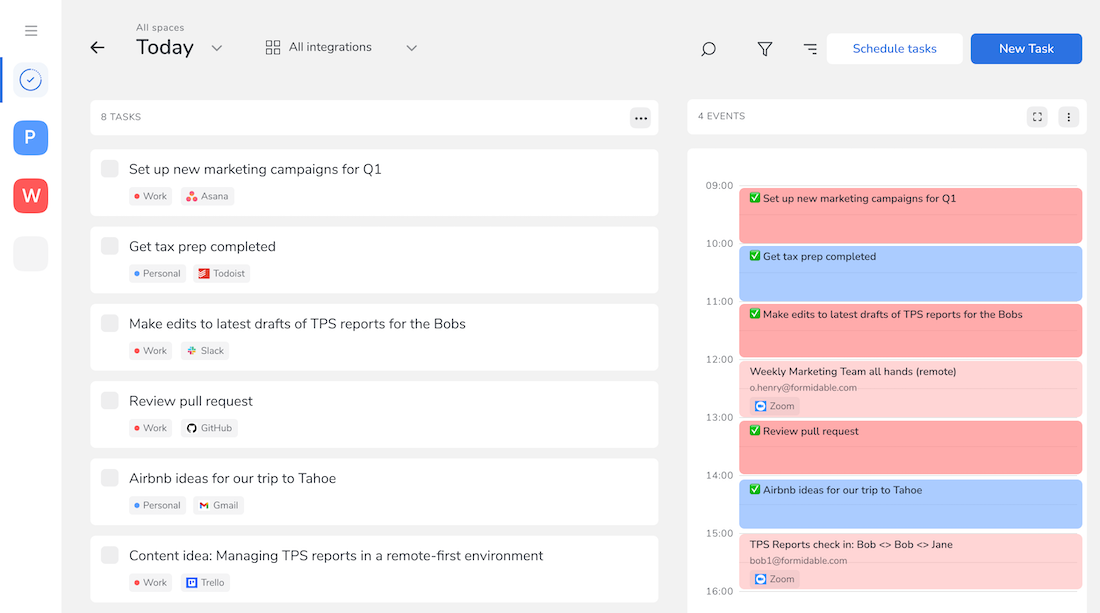How to Use Timeboxing to Boost Focus
Struggling to stay focused throughout the day? Timeboxing might be the solution to your productivity problem!
We’ve all been there. You are at your desk, trying to get work done, and suddenly you find yourself on reddit or Twitter. You catch yourself. You go back to the task you were supposed to be working on. Then five minutes later, you are back on social media or some other distraction. Often this makes you feel bad. Why can’t I stay focused? What’s stopping me from being a productivity machine? What’s wrong with me?
The answer to the last question is: nothing is wrong with you. We aren’t programmed to sit at our desks for 8+ hours straight, being productive the entire time. Our brain needs breaks. The question becomes how to balance needing breaks with the desire to feel productive? In my experience, the answer lies in timeboxing.
Read about my routine for staying productive while staying sane
What is timeboxing?
Timeboxing is a product management concept which allocates a certain amount of time (the timebox) to get a planned activity done. A typical example of this is in software development is the scrum methodology. Here, teams work in sprints (generally two weeks), and they decide ahead of the sprint which tasks they’ll work on. They give themselves a deadline to complete everything. This speeds up the delivery cycle and helps the team avoid getting distracted by things that are out of scope.
How do I use these timeboxing principles in my day-to-day?
Great question! Obviously, a two-week sprint deadline isn’t enough to always keep you focused on the task at hand in a given day. Instead, you can start to timebox tasks throughout your day. The concept is pretty simple. Set aside a certain amount of time for heads-down work, where you focus on one task at a time. Take a break. Then repeat. The most common example of this is the Pomodoro technique. Pomodoro - named after the shape of its Italian inventor’s timer - has you work for 25-minute intervals, followed by a five-minute break. After four of these cycles, you take an extended 15-minute break. The idea behind this is you give yourself a defined time to get a task done. You then start a timer and put your heads down to complete that given task. The timer and the singular focus on the task at hand keep you focused. You then also allow yourself the break to rest your brain for a bit.
The problem with Pomodoro
.
The Pomodoro technique is a great jumping-off point for timeboxing and better daily time management. And for some people, this 25/5 cycle works great. However, Pomodoro is a bit rigid in my experience, with the focus on 4 cycles before a longer break. Also, the work and break times are much too short. When I first tried Pomodoro, I would often find myself working right through the break because I was in the zone. Or I wouldn’t be ready to come back to work after just 5 minutes - I hadn’t adequately recharged yet.
Trying different timeboxing ratios
To address this I changed my work/break ratios. I happened across an article that said, scientifically, the most productive people work on average 52 minutes straight, followed by a 17-minute break. It was a huge breakthrough - the focus time was long enough, and the break gave me enough time to recharge. I’ve played around with other ratios - 60/10 and 45/15 - but I keep coming back to 52/17. Something about it just works for me.
Everyone is different. For some, the 25/5 ratio works better. Perhaps you have lots of calls or meetings, and you rarely have a full hour to work straight. Or maybe you need a long work timer because you get into a zone for an hour straight. The key is to play around with these ratios and find what works best for you. I think an excellent way to know it’s working for you is when you notice yourself checking to see how much time is left, and it tends to only be a minute or two. Similarly, you’ll know they are long enough for the breaks when by the end of them you are itching to get back to work.
What the breaks give you
As mentioned, the obvious advantage of taking breaks is a chance to refresh your brain. What I think works best for me about timeboxing is that I have allotted specific time to complete particular work. It’s that I have allocated time specifically for breaks. I can avoid checking Twitter really quickly during work time because I know I’ll have the opportunity soon. I’ve also used breaks as opportunities to walk around or squeeze in some exercise. However you spend your break - whether it’s exercising or doomscrolling social media - do it away from where you do your work. Have a workspace and a break space if you can. That really helps with refreshing your mind.
How do I start timeboxing?
That’s the best part - it’s super easy! You can grab a kitchen timer if you are more of a hardware person and set it every time you are ready to start on something. There are also many Pomodoro apps, most of which will let you set up custom work/break intervals. My current tool of choice is Flow for Mac. However, I tend to bounce around when I am ready for a change of pace.
Of course, we also recommend complementing your timeboxing/Pomodoro with Taskable as a way to keep track of the things you are meant to be working on. But that’s optional, of course ;)


 (1).png)
.png)



